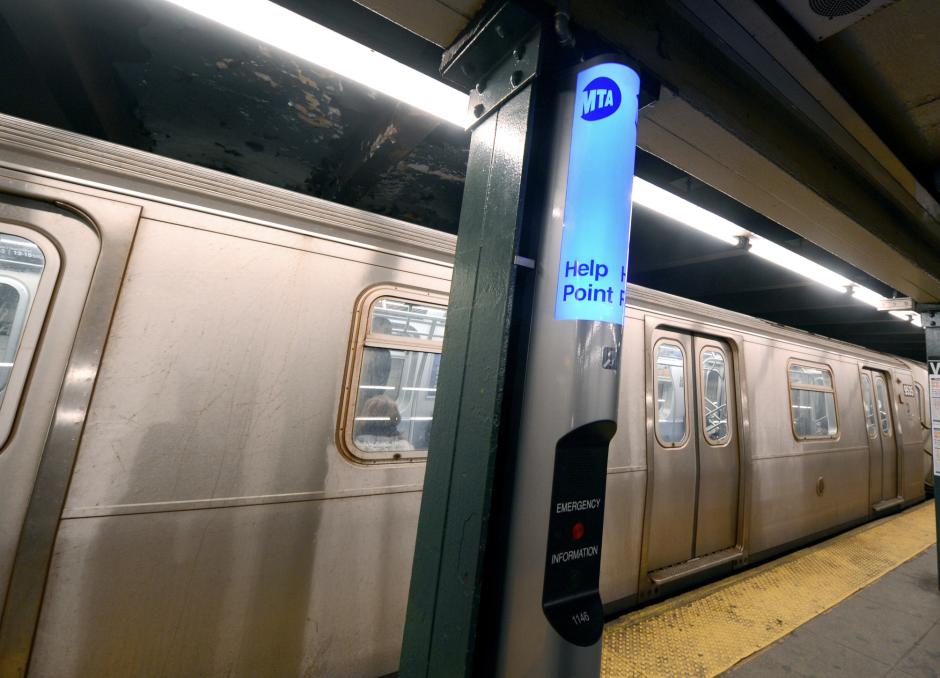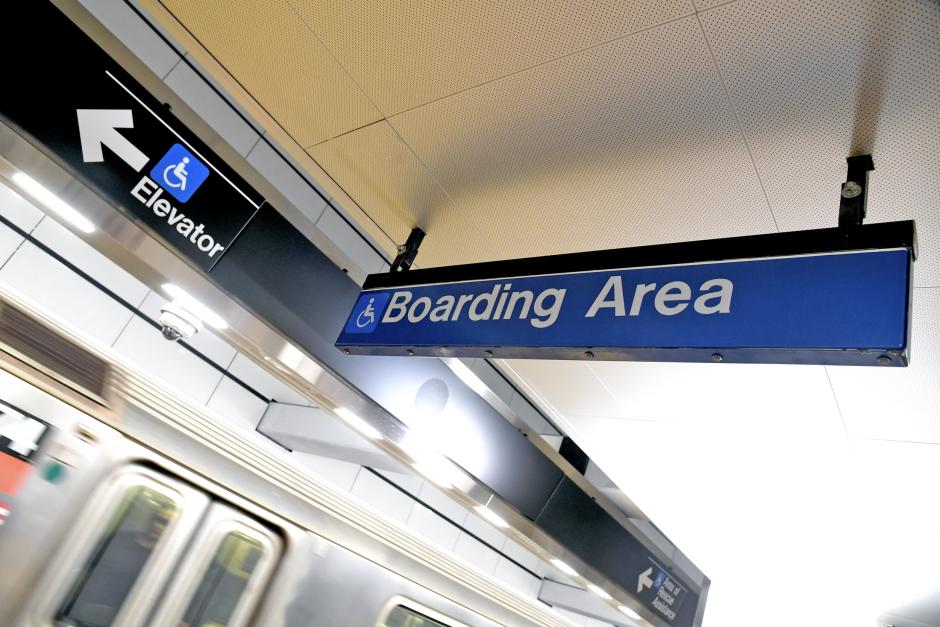The MTA is committed to your safety, and our staff is prepared to respond to incidents or emergencies. We train with local and national emergency response partners and regularly review our processes to ensure that we are keeping our customers as safe as possible.
But we want you to be prepared, too. Your best response during incidents or emergency situations is to remain calm, stay alert, and follow the instructions of MTA staff and emergency personnel.
Read on for safety tips as well as what to expect during certain types of incidents.
Contact us
In stations: Use Help Points or find staff in subway stations or railroad ticket offices.
Text us: Text New York City Transit or Metro-North on WhatsApp.
Call us:
- Use 511 for general questions or issues.
- For Access-A-Ride information, call 1-877-337-2017.
- Call 911 (or text 911 if you are unable to call, available within NYC).
On social media: Tag or DM us on Twitter at @NYCTSubway, @NYCTBus, @LIRR and @MetroNorth. We're also on Facebook.
General safety tips
- Familiarize yourself with emergency instructions and safety signage on our vehicles, in stations, and throughout the MTA system.
- Take note of the vehicle or car number if you need to report something along the way. Sending a picture of the vehicle number is helpful.
- Be aware of how to access MTA staff on vehicles and in stations, including through Help Points, railroad ticket offices, and in the middle of subway trains where conductors are positioned.
- Always follow directions from MTA staff and emergency personnel; announcements on buses or trains; and messages displayed on signs or shared via a public address system.
- Avoid running on stairs, train platforms, or when entering or exiting vehicles.
- Be aware of your surroundings. If you see something, say something.

What to do in an emergency
Follow instructions
Follow instructions from MTA staff or any emergency personnel on the scene. Our staff is trained in how to respond to all types of emergencies and will guide customers to safety.
Stop
Do not attempt to leave a train, bus, or paratransit vehicle on your own in an emergency. Tracks may still be electrified, and other vehicles may still be in motion around you. Don’t try to evacuate without instructions or help from train staff. If there is an immediate threat in your subway or rail car, move to another car; on buses or paratransit vehicles, wait until the vehicle comes to a complete stop before exiting.
Find help
- On subway cars and trains: Tell an MTA staff member immediately. Use the two-way intercoms located near the ends of a train car, if available. On subways, you can also alert the conductor in the middle of the train by waving or vocalizing when the doors are open at the next station.
- On buses: Tell the bus operator immediately.
- On paratransit: Tell the driver or call 911 (or text 911 if you are unable to call).
Wait for information
Follow the instructions of MTA staff as well any emergency personnel on the scene. Staff will keep you informed about the emergency either in person or through the public address system. Stay calm and allow staff to move quickly to address the situation and assist customers as needed.
What to do in an evacuation
Emergency evacuation
Evacuations are rare in our system, but they do happen. Depending on the situation, you may be instructed to evacuate to an adjoining car, train, platform, or to the street from a bus, rail, or Access-A-Ride vehicle.
MTA staff and emergency personnel will provide instructions and assistance to evacuate safely. Remain calm and follow their instructions. If you need assistance during an evacuation, tell an MTA staff member or emergency personnel on the scene. Other customers around you may also be able help alert someone who can help.
Evacuations for customers with disabilities
MTA staff and emergency personnel will work with customers with disabilities to determine the best evacuation method and will try to keep customers with their mobility devices. If safe, a customer who cannot self-evacuate may remain on a vehicle or in a station until the vehicle can be moved safely or the situation is resolved. If necessary for the safety of the customer, customers with mobility devices may be evacuated without their mobility device. In these circumstances, we will return the device as soon as possible.
For customers with visual or auditory disabilities, stay alert for information in both audio and visual formats to help keep you informed of any situation. You can identify yourself to MTA staff as you enter a vehicle so they know you may need additional assistance in an emergency.
If you need assistance during an evacuation, please tell an MTA staff member or emergency personnel. Other customers around you may also be able to relay the need for additional assistance to MTA staff and emergency personnel.

Subway safety features
Help Points
These are located in subway stations and on some railroad platforms, and have a blue light. Help Points have two buttons that connect customers to live agents: The green, bottom button connects to an agent who can provide general information, while the red, top button connects customers directly to emergency personnel.
Help Points have both braille and raised lettering for customers who have visual disabilities. They also have induction loops to assist customers who have auditory disabilities.
Passenger Emergency Intercoms
These are located inside some subway trains near each end of the car. Use the intercom to speak with MTA staff in real time. If there is an emergency, press the red button to activate the intercom and MTA staff will respond. If your subway car is not equipped with an intercom, alert the conductor in the middle of the train at the next station by waving or vocalizing when the doors are open.
Accessible boarding areas
These are typically found in the middle of the platform near the conductor’s car. On Staten Island Railway, the accessible boarding area lines up with the front or back of the train where train staff is present. Look for the sign over the platform (see photo above), or the black-and-white striped board above where the conductor stops the train. (Use caution, since the conductor board is near the platform edge.) When boarding in this area, the conductor can most easily see you and ensure you safely enter and exit the train.
Emergency exits and brake systems
These are clearly marked with overhead signs labeled “Exit.” Be aware of where exits are when inside a station. There are emergency gates at every set of turnstiles that can be used to exit the station quickly if needed.
Each subway has an emergency brake system. Only pull the brake if the train's continued movement presents an immediate danger to people.
Bus safety features
Bus numbers
These three- or four-digit numbers identify each vehicle. They are listed on the exterior and interior of every bus, including in large print and braille inside the bus. In the event of an emergency, providing a bus number will allow emergency personnel and MTA officials to track and locate the bus.
Emergency window exits
These are located at designated marked windows on buses. The emergency window exits are equipped with a latching device that can be pulled to open each window outward.
Roof hatch
Each bus has a single roof hatch, located overhead toward the rear of the bus. The hatch is equipped with an emergency release latch to open outward.
Emergency rear door exit release
These are available on every bus adjacent to the rear doors. The releases are accessed by breaking the pull station cabinet cover. Use the emergency exit door release only in an emergency and when the bus has come to a full stop.
Railroad safety features
Emergency exit doors and windows
These are available on all train cars. Exit doors can be opened by following the instructions located near the side doors. If you cannot exit through the doors, you may have to use the emergency exit windows. Each one is clearly marked by an instructional sticker on or above the window.
Emergency brakes
Use the emergency brake only when the train's continued movement presents a danger to riders. Otherwise, do not use the emergency brake, especially in a tunnel or viaduct. In most situations, ensuring the train can continue to the next station is the safest response.
Passenger Emergency Intercoms
These are located on some railroad train cars near the side doors. The intercom enables real-time communication with train crew. If there is an emergency on the train car, in the train or in the station, press the red button to activate the intercom and the train staff will respond.

Access-A-Ride vehicle safety features
Vehicle numbers
Every MTA-operated Access-A-Ride vehicle (sometimes referred to as “blue and whites” for their appearance) has a unique vehicle number. In an event of an emergency, providing a vehicle number and/or your AAR ID number will help emergency personnel and MTA staff to more quickly track and locate the vehicle. The vehicle number is listed on the exterior and interior of every dedicated vehicle, including in raised lettering.
Emergency exits
MTA-operated vehicles are equipped with two emergency exits:
- Emergency window exits are located at designated marked windows. They have a latching device that can be pulled to open each window outward.
- Emergency rear door exit releases are accessed by breaking the pull station cabinet cover. Use these only when the vehicle has come to a full stop.
Access-A-Ride service also includes trips on certain taxis and for-hire vehicles. Specific emergency features will vary by vehicle.
What to expect from MTA staff
In an incident, you can expect MTA staff to:
- Respond quickly and appropriately.
- Provide instructions and assistance for the specific scenario.
- Directly contact emergency responders.
- Direct MTA and/or emergency personnel to customers who need assistance.
- Provide assistance to persons with disabilities as necessary and appropriate.
- Treat all customers respectfully.